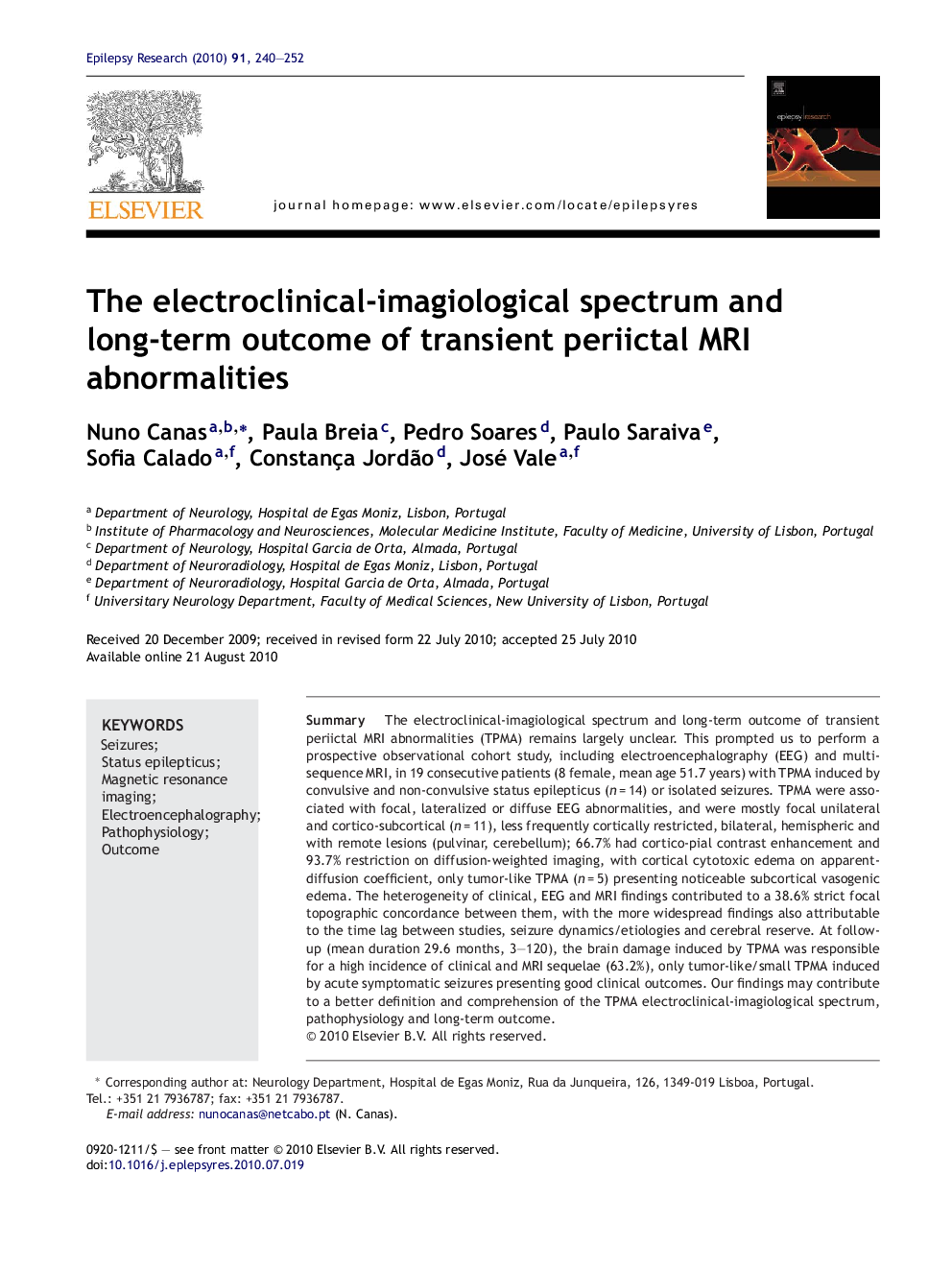| Article ID | Journal | Published Year | Pages | File Type |
|---|---|---|---|---|
| 3052584 | Epilepsy Research | 2010 | 13 Pages |
SummaryThe electroclinical-imagiological spectrum and long-term outcome of transient periictal MRI abnormalities (TPMA) remains largely unclear. This prompted us to perform a prospective observational cohort study, including electroencephalography (EEG) and multi-sequence MRI, in 19 consecutive patients (8 female, mean age 51.7 years) with TPMA induced by convulsive and non-convulsive status epilepticus (n = 14) or isolated seizures. TPMA were associated with focal, lateralized or diffuse EEG abnormalities, and were mostly focal unilateral and cortico-subcortical (n = 11), less frequently cortically restricted, bilateral, hemispheric and with remote lesions (pulvinar, cerebellum); 66.7% had cortico-pial contrast enhancement and 93.7% restriction on diffusion-weighted imaging, with cortical cytotoxic edema on apparent-diffusion coefficient, only tumor-like TPMA (n = 5) presenting noticeable subcortical vasogenic edema. The heterogeneity of clinical, EEG and MRI findings contributed to a 38.6% strict focal topographic concordance between them, with the more widespread findings also attributable to the time lag between studies, seizure dynamics/etiologies and cerebral reserve. At follow-up (mean duration 29.6 months, 3–120), the brain damage induced by TPMA was responsible for a high incidence of clinical and MRI sequelae (63.2%), only tumor-like/small TPMA induced by acute symptomatic seizures presenting good clinical outcomes. Our findings may contribute to a better definition and comprehension of the TPMA electroclinical-imagiological spectrum, pathophysiology and long-term outcome.
